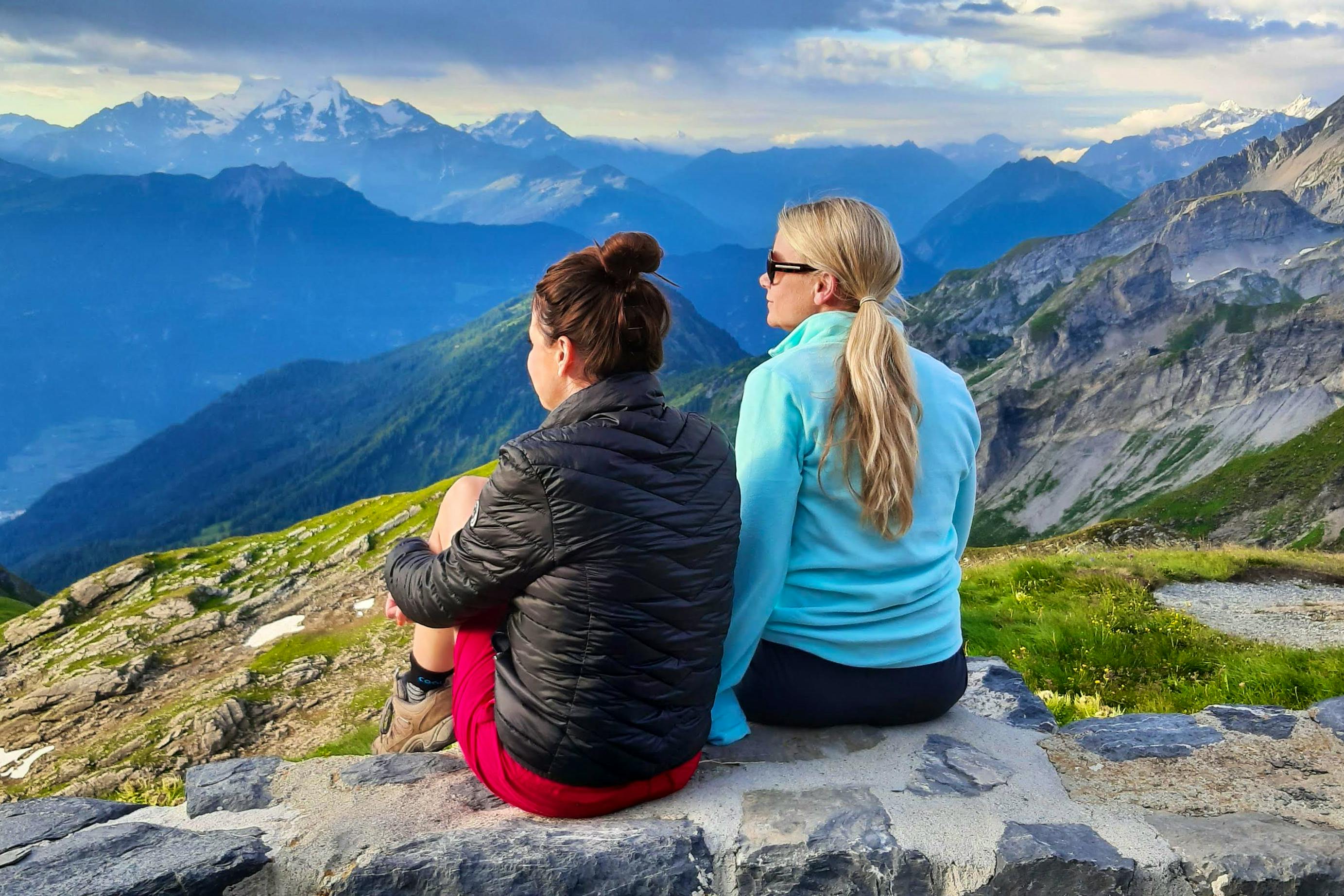Switzerland
Switzerland is an exceptional adventure travel destination and boasts some of our most popular trekking tours. Known for its majestic mountains, pristine lakes, and charming villages, Switzerland provides ample opportunities for outdoor enthusiasts throughout all seasons.
Popular Switzerland Trips
Snapshot of Switzerland Adventure Travel
Switzerland is a trekker's paradise with a vast network of well-marked trails and multi-day hikes. There's a huge choice of routes catering to all levels of fitness and experience.
Trekking Switzerland's Alps offers some of the most iconic trails, such as the Tour du Mont Blanc and Matterhorn highlights trail.
A well-established network of huts and mountain lodges are conveniently situated along the trails if you're looking for the best places to stay in Switzerland for hiking. These cosy accommodations provide shelter, food, and a chance to meet fellow hikers and travellers.
While trekking in Switzerland is typically popular in the summer and autumn months, snowshoeing allows you to explore the Alpine landscapes during the winter season.
Strapping on a pair of snowshoes during our best snowshoeing in Switzerland tour allows you to 'float' across the icy landscape. This provides a unique perspective and a chance to experience the serene beauty of the snow-covered mountains.
For an adventure that will get your heart rate going, look out for the longest Via Ferrata climbing routes in Switzerland. This secured-rock scrambling combines hiking and climbing through a course of fixed cables and ladders. We offer a Via Ferrata Switzerland for beginners' trip to get you started.
Switzerland's well-developed tourism infrastructure, reliable public transportation, and safety measures make it easy to navigate for visitors. In the Swiss mountainside, you may be lucky enough to encounter a variety of wildlife, including ibex, chamois, marmots, and various bird species.
Switzerland Travel FAQs
The best time depends on the activities you're interested in. For hiking, biking, and other summer activities, June to September is typically the best time.
For winter sports like skiing, snowshoeing, snow sledding in Switzerland, and winter hiking in Switzerland, December to March is ideal.
Standard travel insurance should cover things like flight cancelations as well as more standard trekking tours. However, some insurers might not cover adventure activities, especially high-risk ones. Check your policy and consider getting a special policy that covers activities like mountaineering.
Switzerland has high safety standards for outdoor activities and adventure sports.
However, as with any adventure activity, like the most dangerous hike in Switzerland, there are inherent risks.
It's important to go with reputable operators, listen to the guide's instructions, use the appropriate gear, and take out insurance.
Adventure tour operators on Skyhook provide most of the necessary equipment, but it's always good to confirm in advance. If you have your own personal gear, such as hiking boots or trekking poles, you may want to bring it along as it can save you the cost of a rental.
If you're wondering what to wear while hiking in Switzerland, for instance, layers are key for Swiss weather.
Even in summer, temperatures can be cool in the mountains. Waterproof and warm clothing is essential for winter activities.
Sturdy shoes are recommended for hiking and climbing. Refer to the FAQs of a specific trip, like our Matterhorn highlights hike, for our best packing recommendations.
Many of the trails in Switzerland are well marked and it is possible to trek unguided, particularly with the best hikes in Switzerland for beginners.
However, we recommend joining a tour for the social aspect as well as organizational convenience. Guides also have a lot of knowledge and nuggets of information to share which you miss out on when hiking alone.
Switzerland uses the Swiss Franc (CHF). You can draw cash from the machines at Geneva Airport. If your tour takes you across the boundaries of France (as does Tour Du Mont Blanc) you should also take Euros to use on the French side. We recommend that you change your money before you leave the airport as there may not be a chance afterward.
In the months leading up to your trip, we recommend exercising regularly and following a good fitness plan. Check out our training plan for Tour Du Mont Blanc for inspiration.
Why Skyhook?
Join over 27,000 Skyhook adventurers who've used our platform to book directly with our vetted local guides, at local prices (we never markup).
Expert Local Guides
Experienced local guides, handpicked by us.
Best Prices
Never pay a markup on the local guide's price.
Exclusive Club
Earn loyalty rewards every time you travel.
Great Social Vibes
Small group tours provide a richer experience.
Stellar Feedback
Over 2,800 reviews, average of 4.9/5 stars.











